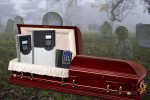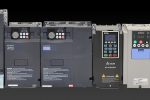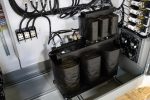Four Mistakes That Are Killing Your VFD
Are You Killing Your VFD?
Not too long ago, I was at a facility that had a variable frequency drive (VFD) mounted on the wall. That VFD had been there for almost 20 years and had a layer of dust and dirt on top of it almost a quarter inch thick. While we were certainly proud that the VFD had kept operating despite those conditions, it definitely is not the best way to consistently get long lives out of your inverter.
One of the best recommendations we can give is to put your VFD inside a panel and to keep it in a controlled environment. This is because drives should be kept cool, clean, and dry. But what about after you already have a VFD?
When speaking to one of our field engineers about customers that have VFDs, I asked what are the biggest mistakes that are made with maintaining this equipment?
With all of the recommendations he gives, I would like to remind you that only qualified personnel should be working on electrical panels. Also, they should only work on panels with the proper PPE and safety precautions in place. If you’re unsure, get someone who knows what they’re doing.
1. Keeping it Clean
Without hesitation, our field engineer said that the biggest issues he sees are that drives and panels aren’t kept clean. This causes many issues down the road, with one major problem being that fans will get plugged up and stop operating correctly, leading to overheating.
The quick and easy solutions? Check and change your filters. Most VFD panels come with filters on air inlets. Each environment and application is different, so the exact time between checks will vary, but make sure to get on a schedule and get it done. Some filters need to be replaced, while some can be cleaned. Either way, make sure they are doing their job by filtering out the bad and letting as much clean air through as possible.
Our expert also recommended periodically going beyond the filters and checking inside the panel to make sure that it is clean. Check that the equipment doesn’t have dust buildup or other cleanliness issues. Again, be safe and make sure whoever is doing this knows how to do it correctly.
2. Verifying Connections
The next biggest mistake is that electrical connections aren’t consistently verified. If a drive panel is commissioned correctly, the technician will take a torque wrench and make sure all connections are set to match specifications where needed and that all connections are secure. That doesn’t mean that they stay that way forever.
You should set a schedule to periodically verify all the connections to your VFD and panel. Visually inspect these connections and ensure they are tight, using a torque wrench to set them back to the original specifications where necessary.
3. Checking the Temperature
For some customers, they set a VFD panel in a room and forget about it until there is a problem. If you’re not in the room often, you may not realize that the room is getting hot or having other issues. As mentioned above, heat is the number one thing that causes premature failure of all electronics including drives.
Set up a normal schedule to check and record the temperature of where the VFD is being kept. If you have a set schedule to make sure you are in the room and monitoring temperature, you can keep it from getting out of control and going too long at a heat which will hurt the drive.
4. Monitoring for Moisture
It should come as no shock that electronics are not supposed to get wet. While there are protections on some panels for moisture, not every VFD or panel has these protections. Even if they do have fluid protection, it is better to avoid accidents that may somehow still cause a problem.
Regularly check for moisture and potential causes of it. Monitor pipes, sources of condensation, and other issues. Our technician mentioned that one of the common things he sees is employees putting drinks on or around panels. Although a spill could be a major issue, many people don’t think about how much damage even a sweating drink could be if the condensation gets to the wrong part of the panel.
Keep Up With Your Drive!
While there are many things that can cause a VFD to fail over time, it is not overly complicated to extend the life of most VFDs. Set a schedule to regularly check for cleanliness, tight connections, appropriate temperatures, and dry conditions. If you need help with information on maintaining your VFDs, or even if you want to purchase a panel or filters to help protect your VFD, contact us and we would be happy to help.



